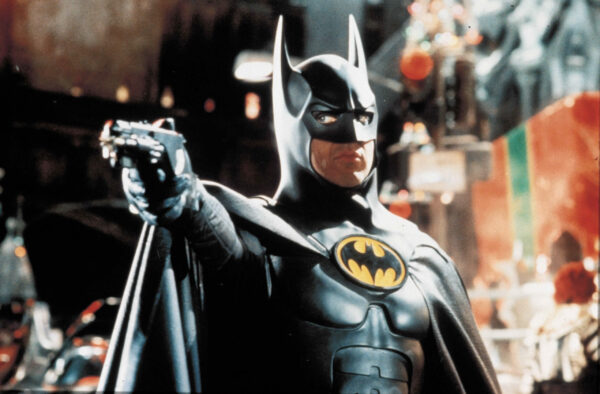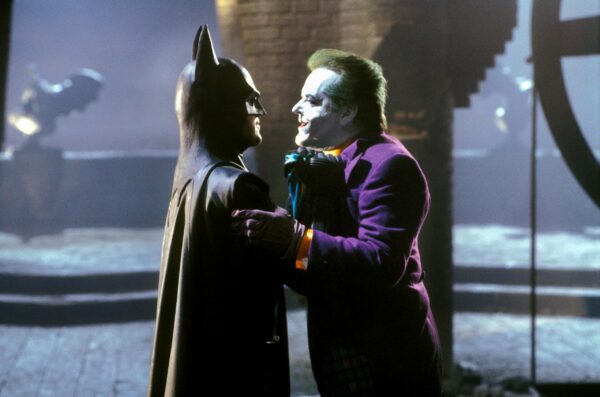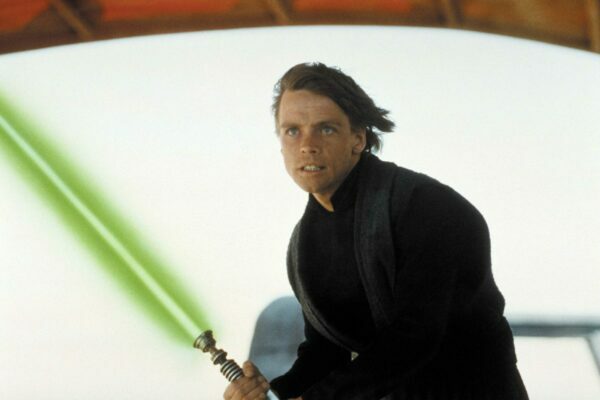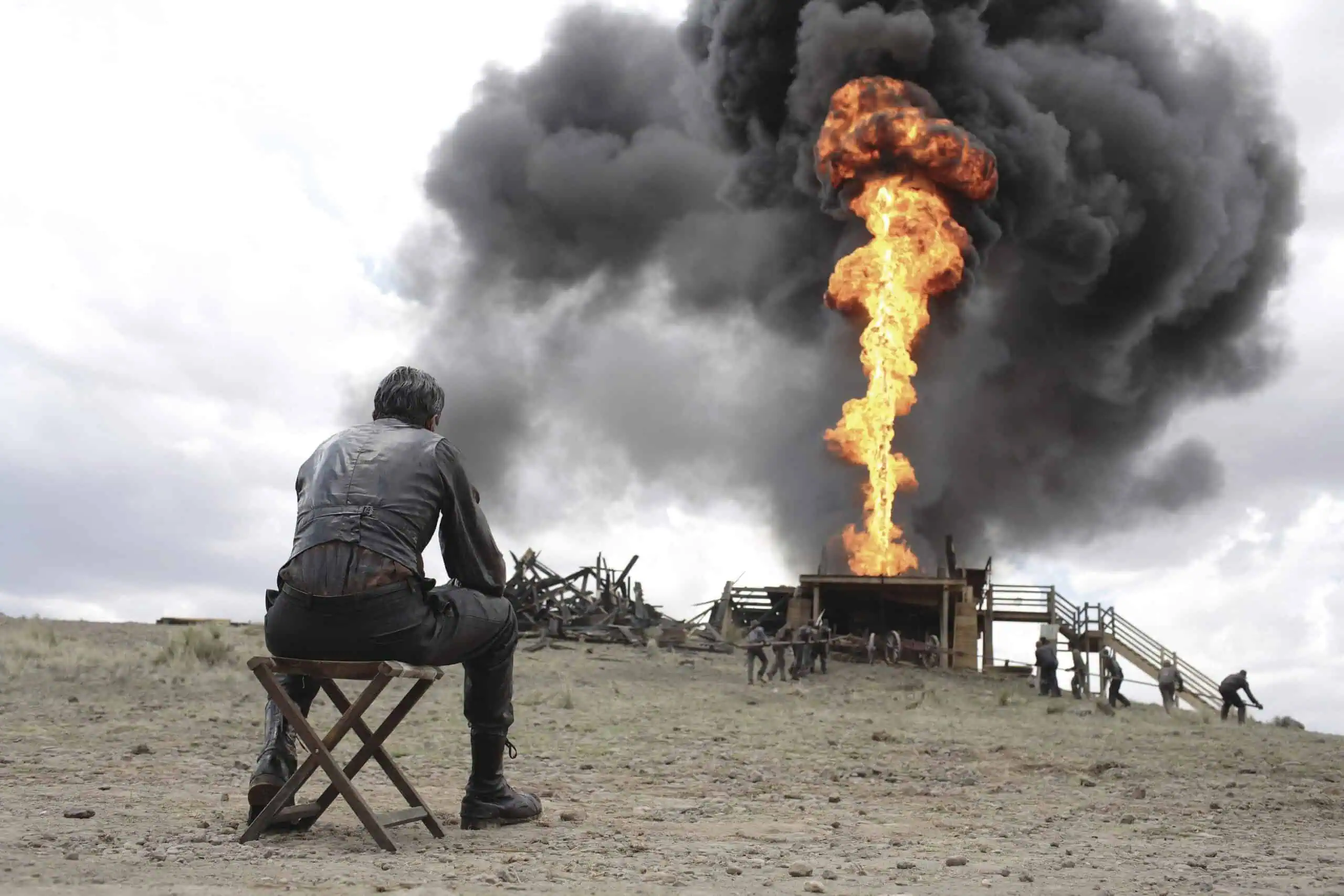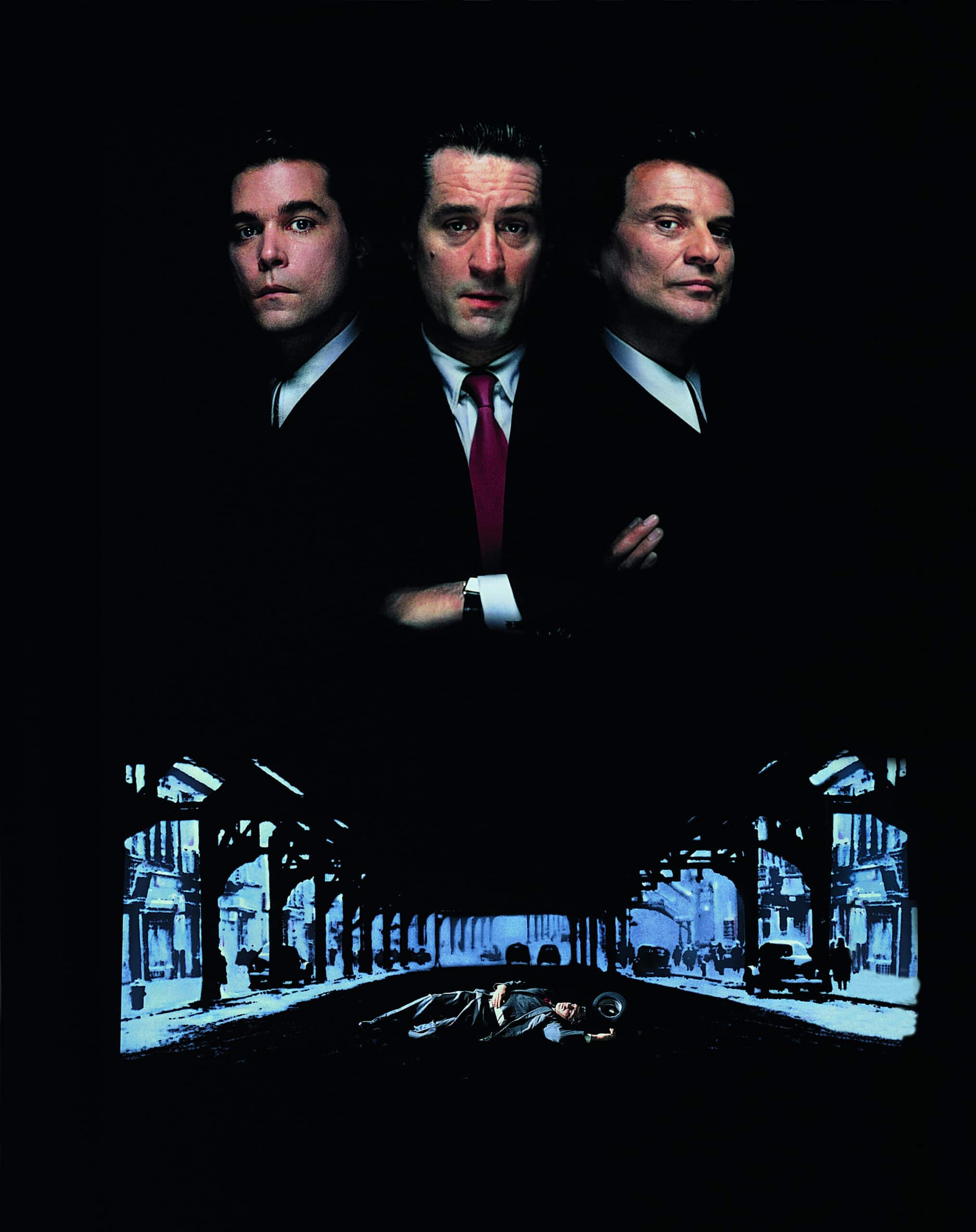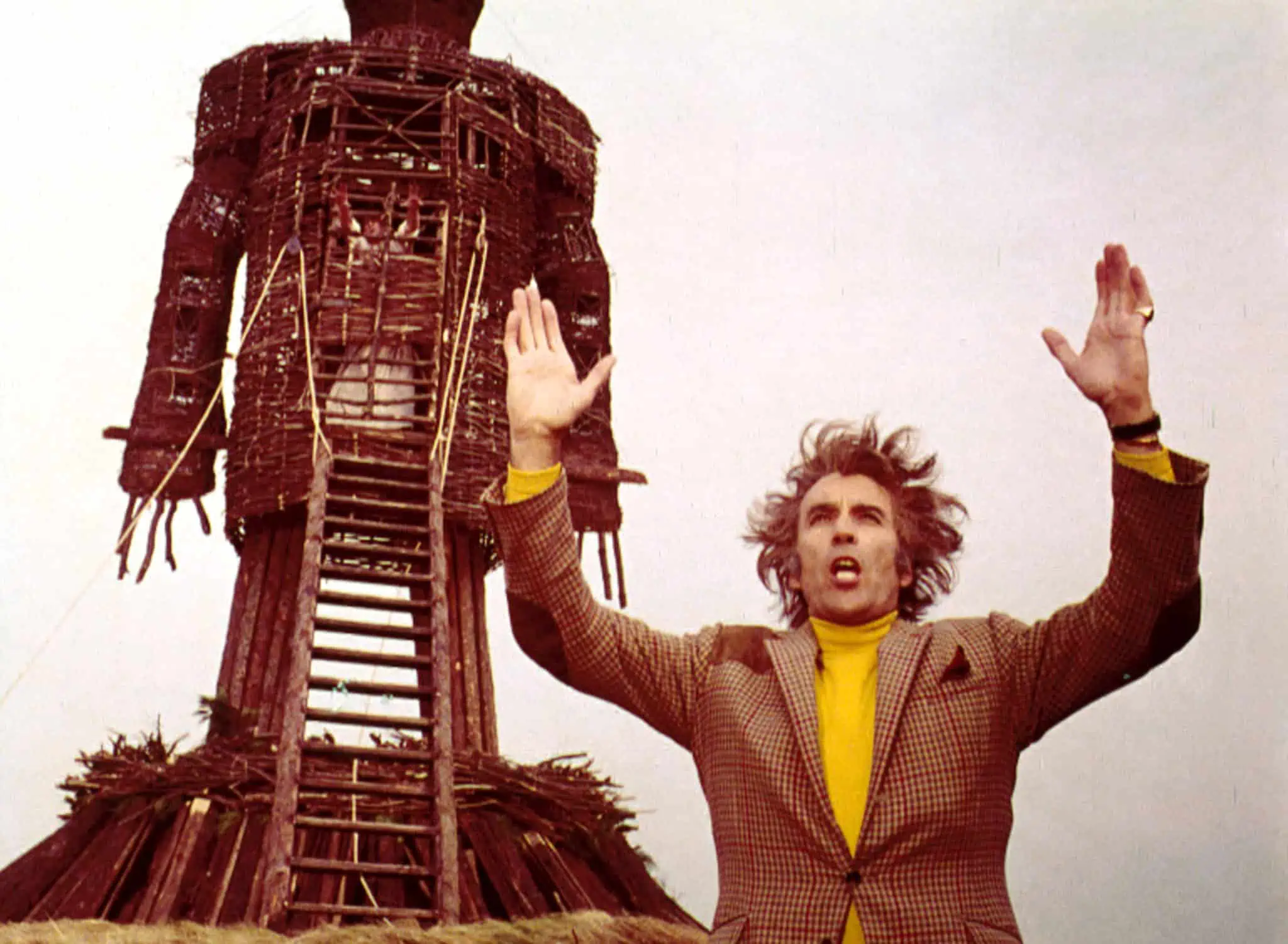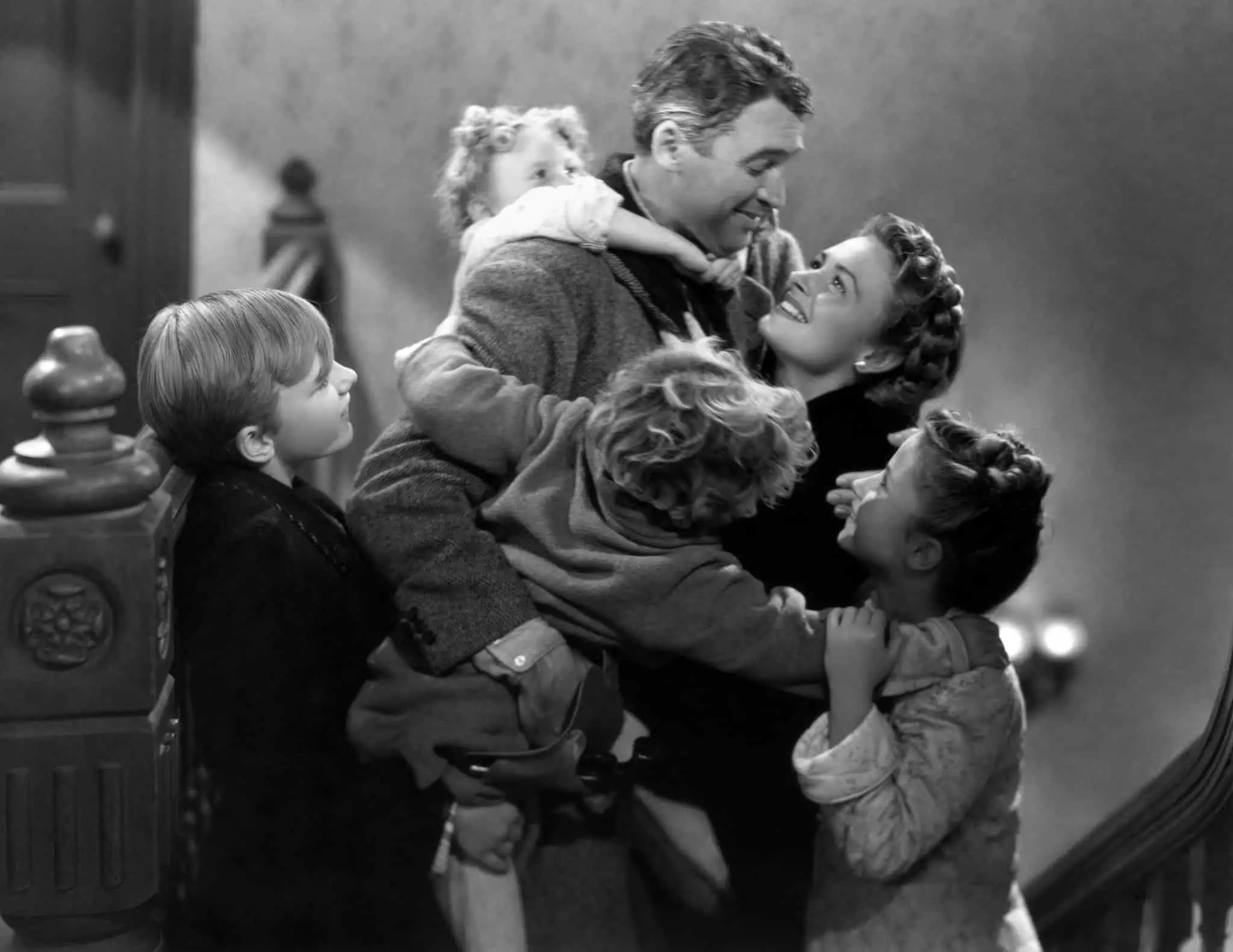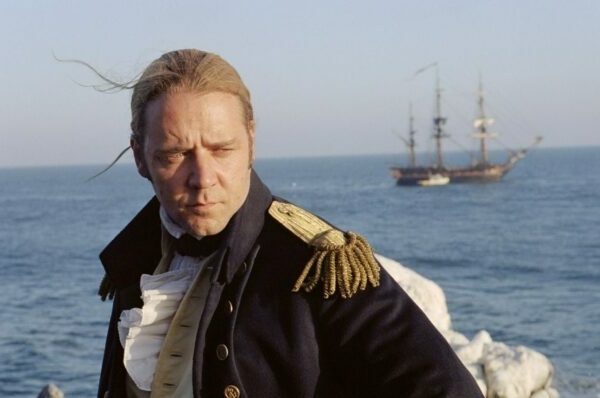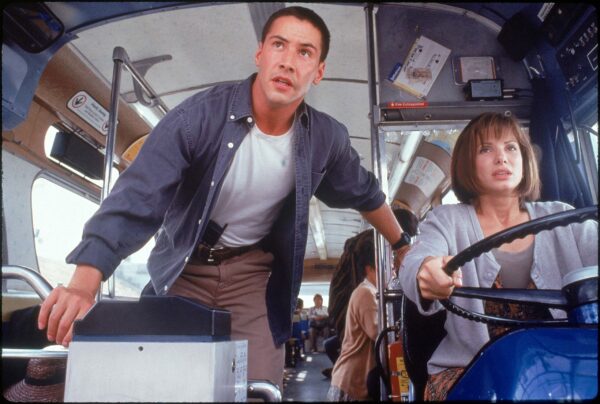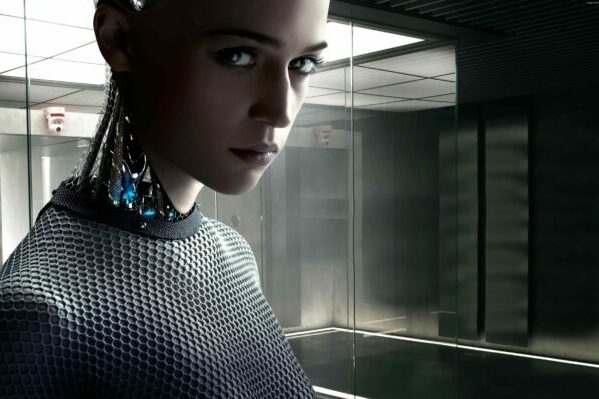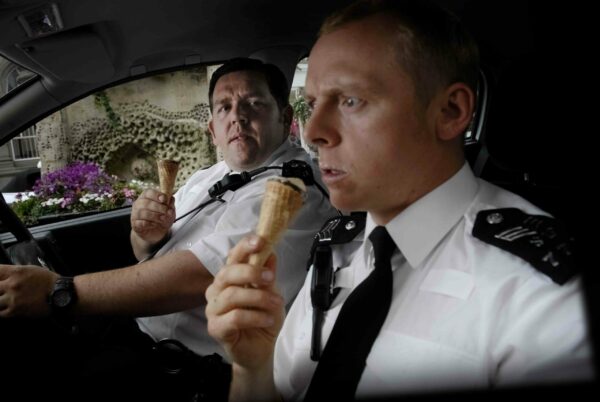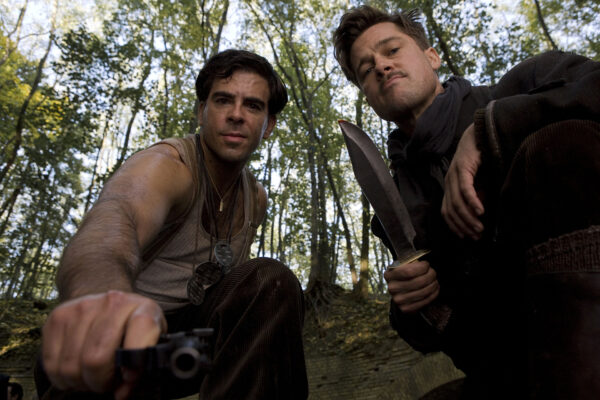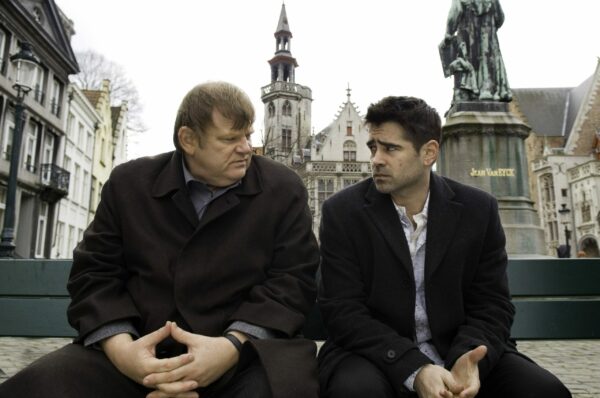
Brian De Palma’s gangster film is one of the most popular genre films of the 1980s. It has a fascinating behind the scenes story, and we’re telling it with 30 fun facts about The Untouchables
Coming in 1987, The Untouchables is one of the most popular gangster films of the 1980s. Based on the real life takedown of famous mafia boss Al Capone by Eliot Ness and his crew, it was directed by Brian De Palma and starred big names in Kevin Costner, Sean Connery, and Robert De Niro.
The story of how the film was made is a fascinating one, and we’ve got all the information in 30 fascinating facts about The Untouchables.
1. Remnants of the real Capone are in the film
The main antagonist of the film is Al Capone, the legendary gangster played by Robert De Niro. De Niro is famously a method actor, and some elements of the real Capone were brought into the film. The film opens with Capone receiving a shave in a barbershop, and the set included a few items (cologne bottles, shaving brushes and foam cans) that belonged to the real Al Capone.
The opening scene in the barber shop
2. There is a colour theme in the film
In the film, Capone lives in the Lexington Hotel, having his own luxury suite. In designing the Lexington, Brian De Palma created a continuous visual theme of the colour red. The foyer carpet and walls are red; the hotel porters wear red. There are red chairs, and the lobby leading to Capone’s room is red. However, once we see inside Capone’s room, there’s no red anywhere. DePalma did this to symbolise the fact that there was blood spilled in Chicago but, with none of it traced back to Capone, it didn’t touch him.
The red decor of the Lexington
3. The film was based on a book
The Untouchables first existed as a book of the same title which was co-written by the real Eliot Ness in the 1950s. Paramount had adapted that book into a popular TV show in the 50s and 60s and, 20 years later, decided they wanted to develop it for the big screen.
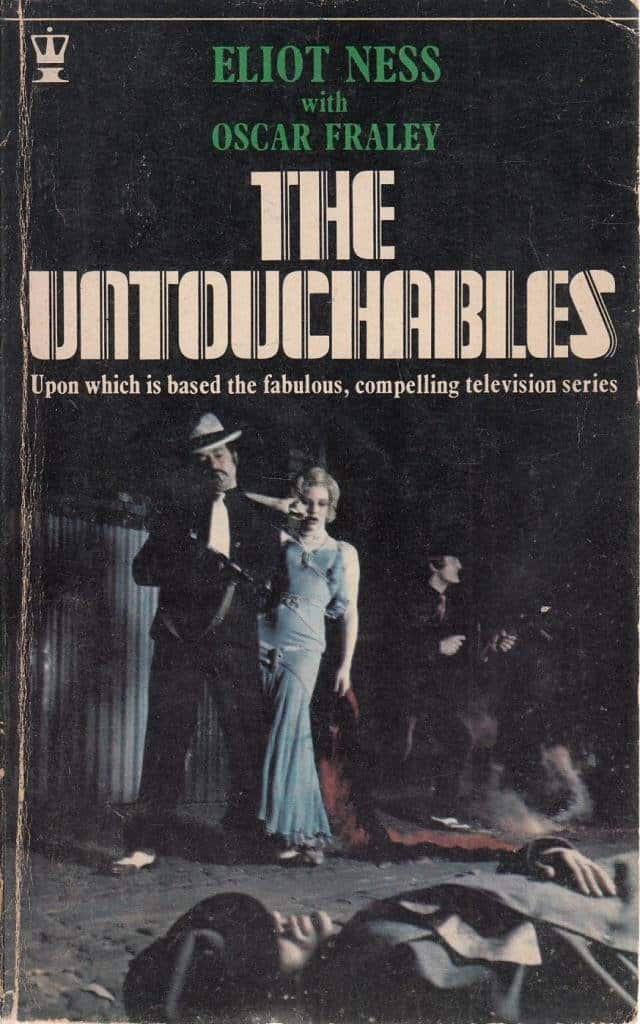
The Untouchables by Eliot Ness
4. Brian De Palma also directed another classic instead
In mid-1986, Brian De Palma was in talks to direct Fatal Attraction (1987), the thriller starring Michael Douglas and Glenn Close. De Palma liked the idea and script of Fatal Attraction but wasn’t keen on Michael Douglas in the lead. De Palma went to the producer, Sherry Lansing, and said she would have to choose between himself and Douglas. Lansing chose Douglas.
At this time, a producer called Art Linson was looking for directors for The Untouchables. He heard De Palma was available and gave him a call. De Palma was interested as the main thing missing from his portfolio was a mainstream hit. He told Linson what he wanted to do with The Untouchables – a 1930s gangster-western – and Linson loved the idea. De Palma was hired.
5. De Palma brought his arsenal of tricks to the film
Brian De Palma has a reputation as a very visual director, and we see that throughout The Untouchables. Some De Palma trademarks we see on The Untouchables:
- The creeping POV shot. We see this in the sequence when Malone (Sean Connery) is killed.
- In the church scene between Ness (Kevin Costner) and Malone, we see a split-focus diopta effect.
- De Palma has a reputation for working well with actors. On The Untouchables, Kevin Costner said, “I felt totally in sync with Brian throughout.” Robert De Niro called De Palma, “An actor’s director.” And Sean Connery said, “Working with Brian was everything I expected.”
The creeping POV shot in the film
6. De Palma wanted the film to look polished
A way in which The Untouchables is visually different to some other De Palma films is the aesthetic tone. De Palma often a raw realism, whereas The Untouchables has a sheen and elegance.
On this polished look, De Palma said:
“Corruption should look great, like Nazi Germany. The world of Capone’s Chicago is slick, a world that’s run by big money. And it has to look fabulous.”
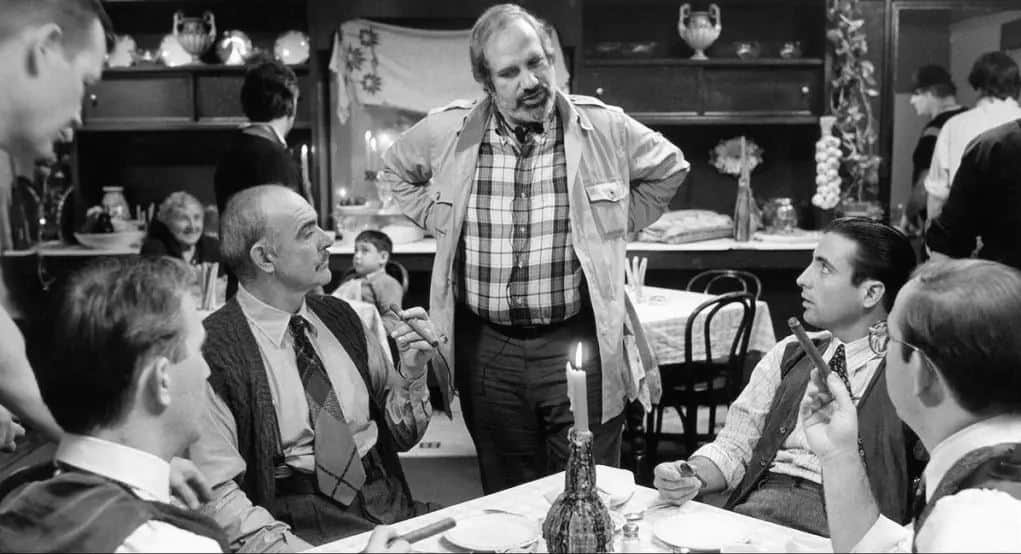
Brian De Palma and The Untouchables cast
7. It could have been black and white
The Director of Photography on the film was Stephen Burum. Inspired by the 1950s TV show, Burum actually wanted to shoot the film in black and white. De Palma liked the idea but told Burum, “Don’t break your heart Steve, they won’t let us do it.”
The 1950s TV show Stephen Burum had in mind
8. Kevin Costner wasn’t a shoo-in for the lead role
Kevin Costner plays Eliot Ness, the protagonist of the film and Prohibition Agent who heads up The Untouchable. However, Costner wasn’t a big name at the time and De Palma didn’t want him at first as he thought he wasn’t well known enough. Therefore, other actors were approached and discussed.
Harrison Ford turned the role down, and Mickey Rourke, Mel Gibson, Jack Nicholson and Michael Douglas were all considered to play Ness.
When Costner came into the picture as a potential Ness, De Palma called his old pal Steven Spielberg (who knew Costner from Fandango, 1985). Spielberg said, “The guy is going places. Get him in.”
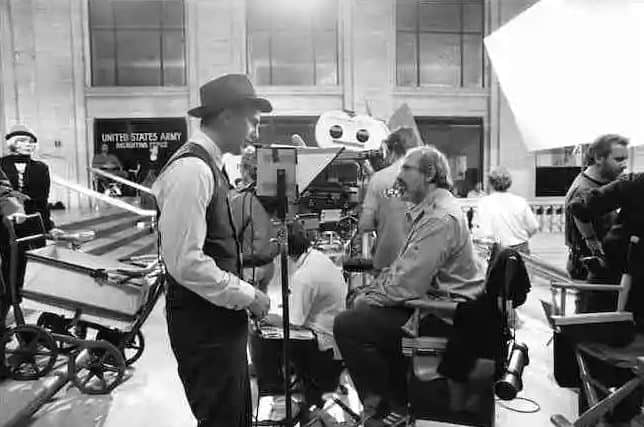
Kevin Costner as Eliot Ness
9. Costner was a bit wary of the biggest star on the set
Kevin Costner himself was very aware of his lack of experience at this point in his career. Robert De Niro (Al Capone) on the other hand, had already won two acting Oscars and been nominated for two more.
Costner said he was intimidated by Robert De Niro on the set: “I had trouble with some scenes, because my character was very straight, and Robert was able to jump off the page. It was hard for me to survive in some of those scenes, and Sean talked to me about it.”
Costner and De Niro in The Untouchables
10. Jimmy Malone could also have been played by a different actor
The other lead Untouchable, and mentor to Ness, is tough guy Irish cop Jimmy Malone. He’s played memorably by Sean Connery.
Connery was the first person De Palma approached to play Malone, but one other name was discussed as a potential Jimmy. That was Gene Hackman.
When De Palma offered Connery the part, however, he accepted it immediately. Connery was a fan of screenwriter David Mamet and said, “I thought the part was very original and different and had a very interesting storyline.”
For his performance as Jimmy Malone, Connery was nominated for, and won, Best Supporting Actor at the Oscars. He also won a Golden Globe and was nominated at the BAFTAS.
Sean Connery accepts his award at the 1988 Oscars
11. Connery requested some script changes
Sean Connery was a big David Mamet fan as mentioned above, but that didn’t sop him making some change requests to the screenplay. It was Connery’s idea to have the blood oath between Ness and Malone take place in a church. In the script, it was set in the street but Connery thought a Catholic church would be the only place safe enough in Chicago for two people to talk about bringing Capone down.
The Blood Oath scene in The Untouchables
12. Sean Connery’s Irish accent has been much discussed
The character of Malone is Irish, where Sean Connery was, famously, a proud Scotsman. Therefore, Connery was required to affect an Irish accent for the role; something that he did less than successfully according to critics.
In 2003, Empire magazine compiled a list of the Worst Movie Accents Of All Time. In that list, they ranked Connery’s accent as Jimmy Malone as the worst in film history. Ahead of Keanu Reeves troublesome English accent in Bram Stoker’s Dracula (1992), Charlton Heston potentially insulting Mexican accent in Touch Of Evil (1958) and Dick Van Dyke famously bad cockney in Mary Poppins (1964).
13. Andy Garcia could have played a different character
Andy Garcia plays George Stone – a young sharp shooter recruited to the team by Ness and Malone. De Palma wanted Garcia to be involved after seeing him in 8 Million Ways To Die (1986) and sold it to Garcia by saying, “It’s going to be a gangster version of Seven Samurai.”
De Palma, though, originally wanted Garcia to play Frank Nitti – Capone’s henchman who dresses in white. Garcia, though, wanted to read as Stone as he didn’t want to be typecast as a villain. He also wanted to work closely with Connery as he was a hero of his from the James Bond movies.
Stone is recruited into The Untouchables
14. Connery was a father figure on set
In the film, Malone plays as a mentor and fatherly figure to the rest of the team. And, according to Garcia, this extended to real life, too. Garcia said the dynamic of the characters in the film was basically the dynamic of the actors off-screen and, filming the scene where when Malone calls about having the bookkeepers details, Connery thought Garcia was over-acting. He said to him, “Come on kid this isn’t Hamlet.”
15. Garcia brought some ideas to the script
As well as playing Stone, Garcia also had some ideas of his own. The moment in the train station shootout where Stone slides to catch the baby carriage was actually one of Garcia’s ideas. De Palma knew he wanted Stone to end up under the carriage but couldn’t figure out how to get him there. Garcia was a baseball player in his younger days and said, “Oh, its just a slide into 4th. I can do that, it’ll look great.” De Palma said, “Show me” so Garcia did, and De Palma loved it.
The moment Stone catches the baby carriage
16. De Palma wanted a huge name to play Al Capone
Capone is played in the film by Robert De Niro, one of the biggest names in Hollywood. De Palma always wanted a huge star to play the legendary gangster, but his first thought wasn’t De Niro. At first, De Palma was keen on Marlon Brando.
They offered the role Marlon Brando on a salary of $5m for just 2 weeks work but he said no.
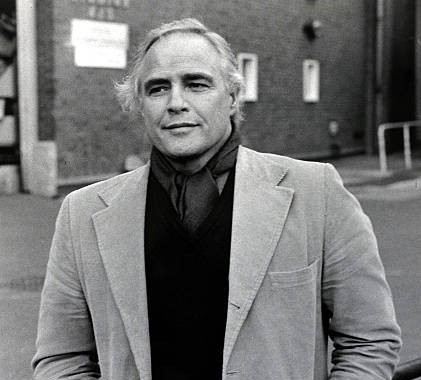
Marlon Brando in 1987
17. Another big name was in the frame to play Capone, too
By this point, Robert De Niro was already a legend. He’d starred in Mean Streets (1973), Taxi Driver (1976) and the Deer Hunter (1978) and won 2 Oscars – for The Godfather Part II (1974) and Raging Bull (1980). De Palma knew De Niro from a few low-budget films they did together in the late 60s so spoke to him about the chance to play Capone. However, De Niro took a while to commit so De Palma had somebody lined up just in case. That was Bob Hoskins, who De Palma arranged lined a ‘play or pay’ deal. That basically means the studio paid Hoskins to be on standby and not take any other gigs in case they wanted him as Capone.
De Palma met Hoskins at a restaurant and was very honest. He said, “I want De Niro. But if he says no, will you do it?” Hoskins said he would but heard nothing about it until a few months later when he heard on the news that De Niro had been cast. A few days after that he received a cheque through the post for $200,000 with a note that said, “Thanks for your time, Bob. Love, Brian.”
18. De Niro went method
As he usually did around this time in his career, De Niro did some method acting for the part of Al Capone. To put on the weight required, he went on an eating tour of Italy, gorging pasta and pizza. He also shaved his head to make it look more round.
De Niro as Al Capone
19. A book influenced De Niro
As well as going method, De Niro said his portrayal was influenced by a book called My Years With Capone: Jack Woodford and Al Capone, 1924-1932 by Jack Woodford and Neil Elliott that he said gave him crucial insight into the character.
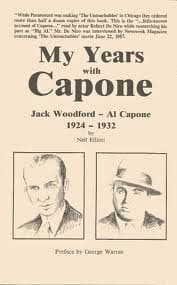
My Years with Capone by Jack Woodford
20. Connery ended up in hospital at one point
The scene where Malone dies ends with Nitti turning up unexpectedly and pumping Malone full of lead. To film this, Connery was required to wear lots of squibs, which he wasn’t at all keen on. Despite playing James Bond for years, Connery had never been shot in a movie before, much to De Palma’s surprise.
After the first take, Connery had to go to hospital because he got dust in his eyes, and De Palma had to beg him to do a second take; the second take is the one they use in the film.
21. The producer played a key role
The producer on The Untouchables was Art Linson, an experienced producer on films like Fast Times At Ridgemont High (1982) and The Wild Life (1984). Linson played a crucial role in getting the film to the screen. Some of the things he did:
- It was Linson who contacted De Palma about directing, even though the studio were hesitant. Linson knew De Palma was a great director looking for a hit movie.
- Linson fought for De Palma to be able to cast whoever he wanted. Kevin Costner would never have been hired otherwise as he was unknown.
- Paramount told Linson they needed to cut $1 million dollars out of the budget. Linson said not only could they not do that, but they needed to increase the budget so they could afford De Niro. And Linson refused to budge even when the studio threatened to fire him.
- A Paramount executive called Ned Tanen thought the script, “Was a piece of dreck,” and wanted to fire screenwriter David Mamet. Art Linson persuaded them otherwise and said in a studio meeting, “I already know you’re sons of bitches but if you fire David Mamet then you’re crazy sons of bitches!”
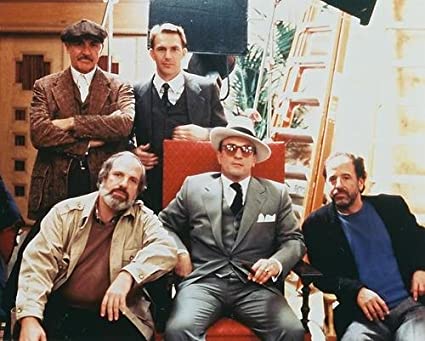
Art Linson, right, with Brian De Palma and the main cast
22. David Mamet wasn’t the first writer
As mentioned already, The Untouchables is written by David Mamet. However, another writer was hired to write the film before Mamet.
The job was first given to a Pulitzer-prize winning playwright called Wendy Wasserstein. She did a lot of work on the film but Paramount fired her when they thought her script lacked authenticity. This is when David Mamet was brought in. He’d won a Pulitzer himself for writing Glengarry Glen Ross, and written great screenplays for The Postman Always Rings Twice (1982) and The Verdict (1982). However, Mamet wasn’t that keen taking on The Untouchables. He said what attracted him to the job was, “A shitload of money.”
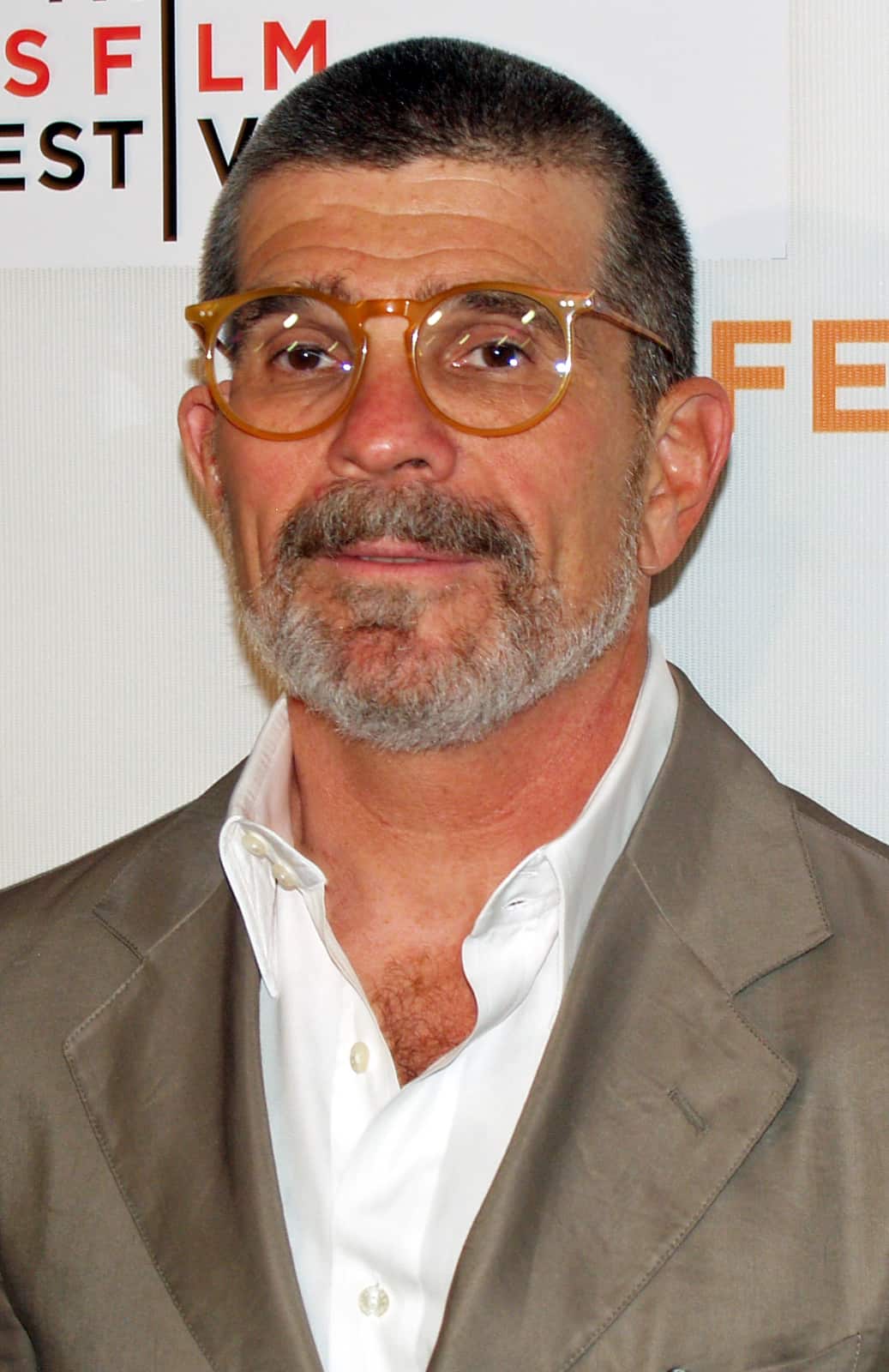
David Mamet, screenwriter of The Untouchables
23. Mamet had a vision for the film
Mamet has said that before he wrote a word of the screenplay, he knew three things he wanted to do very quickly:
- He wanted to create a triangle between Capone and the two lead Untouchables. Capone is evil, then there is Ness and Malone, the idealist and the pragmatist.
- He wanted the title The Untouchables to refer not just the good guys but the bad guys as well. Capone is untouchable. He boasts to the press about breaking the law and kills anybody who gets in his way without consequence.
- He wanted to take influence from classic westerns by directors such as John Ford and Sergio Leone. Those movies revolved around classic themes of Good vs Evil, with archetypal heroes and villains. Mamet was keen on tapping into that.
24. The film plays hard and fast with the facts
Perhaps the biggest criticism the film receives nowadays is in its historical accuracy. Keen to tell a rollercoaster ride of a story, Mamet adopted a writing attitude of not letting the facts get in the way. Some examples:
- In the film, Eliot Ness is very much a do-gooder (at the start, at least). He prohibits all police officers from drinking. However, the real Ness was allegedly an alcoholic who didn’t adhere to prohibition himself.
- In real life, the event that made the Chicago Police focus their efforts on taking down Capone was The Saint Valentine’s Day Massacre in 1929. In the film, this is replaced with a bomb detonating in a pub, killing a little girl.
- The midpoint action set piece is the Canadian border sequence. This was a complete fabrication. In fact, alcohol was legal in Canada so it wouldn’t even have been illegal.
- Ness did not kill Frank Nitti in real life. Nitti committed suicide years later.
- And in real life, Eliot Ness and Al Capone never even met in person.
25. The composer was an industry legend
De Palma was keen to channel the popular western movies of classic Hollywood so decided who better to bring in to compose the music than Ennio Morricone. A composer with decades of experience, Morricone had composed music for several Sergio Leone-directed spaghetti westerns including the iconic music for The Good, The Bad and The Ugly (1966).
De Palma loved almost everything that Morricone came up with, but wasn’t keen on the Lullaby Theme that plays over shots of the baby carriage during the train station shootout sequence. De Palma had to be convinced to use it by Morricone and in return, Morricone didn’t like the main theme. Morricone said:
“De Palma is delicious! But he wanted something I didn’t want to write – a triumphal piece for the police. I wrote nine different pieces and said, ‘Please don’t choose the seventh!’. And guess what he chose? The seventh. But… it really suits the movie.”
Ennio Morricone’s main theme for The Untouchables
26. The famous shootout sequence was written to be different
One of the most famous moments in The Untouchables takes place at Chicago train station where Ness and Stone have an epic shootout with a crew of Capone’s men. The shootout takes place on a staircase, all while Ness tries to save a baby carriage as it tumbles down the steps.
Mamet’s original script had the gunfight take place on a train. However, De Palma had to deal with two major problems:
- At the last minute, Paramount decided that finding or creating a 1930s era train was too expensive and pulled the budget.
- Not only that, but Paramount refused to pay David Mamet to write a new scene.
De Palma was in trouble. He had nothing storyboarded or written, nor any budget for the biggest scene in the film, and he had to shoot it immediately. So, taking a lot of inspiration – from a Russian silent movie called Battleship Potemkin (1925), De Palma had the idea of having a baby carriage roll slowly down the station steps as the centrepiece of the huge shootout. With nothing scripted, De Palma essentially storyboarded the sequence as he was going along.
David Mamet, however, was not a fan. He later called the shootout scene, “Cockamamie!”
27. De Palma had some issues with De Niro
De Palma allegedly had some problems with De Niro on the film as De Niro was struggling to learn his lines properly. As a solution, De Palma followed De Niro everywhere with the script – round the set, on lunch, in makeup – and read him his lines until De Niro knew them.
This caused an issue in this final courtroom scene where Capone is found guilty. When Ness confronts Capone he says, “Never stop fighting till the fight is done.” In the first take, De Niro couldn’t remember his line so kept repeating the first one: “You’re nothing but a lot of talk and a badge!” De Palma loved it and kept it that way.
The courtroom confrontation between Ness and Capone
28. The film originally ended differently
The final scene in the film takes place outside the courthouse. A reporter asks Ness what he’ll do if prohibition is ended, to which Ness replies, “I think I’ll have a drink!”
A great way to end, but there was originally a different final scene for the movie. Mamet had written a scene that starts with a close up of Al Capone’s face as it is being warmed up for a shave. Then, the camera would have pulled out while still focused on Capone to show that he has reporters around him, much like the opening scene of the film. This time, though, he is in his jail cell.
29. The film was a box office hit
On a budget of $25 million, The Untouchables was a hit, taking $106.2 million globally.
And at the time, it received fairly positive reviews from critics:
Roger Ebert gave the film 2.5/4 and said it has, “Lead-footed direction. Depends more on cliches than artistic direction.”
Pauline Kael was positive, and said: “This is not a personal movie. De Palma isn’t the artist here that he is in Blow Out, he’s a showman. This makes it all the more enjoyable. When it’s over, you want to applaud.”
And Vincent Canby of The New York Times gave the film a positive review, calling it, “Smashing,” and saying it was, “Vulgar, violent, funny and sometimes breathtakingly beautiful.”
30. A sequel was on the cards for a while
No sequel was ever made to The Untouchables, but it was discussed. De Palma and Paramount wanted to continue the series, and had a script called Capone Rising. This was a prequel to The Untouchables that told the tale of the mobster’s rise to power prior to clashing with Ness. In 2007, De Palma was interested in Nicolas Cage as Capone, with Gerard Butler playing a younger version of Sean Connery’s character. In 2012, the director told Collider that the script was, “Great,” but that they’ve, “Never been able to get it all together.”
And that’s that – 30 wild, fun facts about Unforgiven – one of the great western movies. Please share on your social media channels, and subscribe to our YouTube channel for lots of great video content.
The beginning of a beautiful friendship
Stay up-to-date with all things All The Right Movies by signing up for our e-newsletter.


